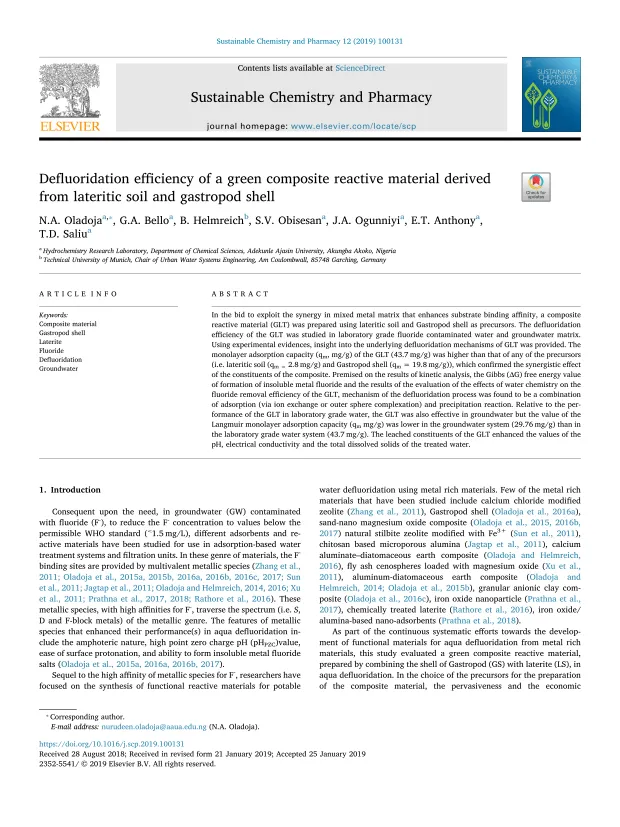In the bid to exploit the synergy in mixed metal matrix that enhances substrate binding affinity, a composite reactive material (GLT) was prepared using lateritic soil and Gastropod shell as precursors. The defluoridation efficiency of the GLT was studied in laboratory grade fluoride contaminated water and groundwater matrix. Using experimental evidences, insight into the underlying defluoridation mechanisms of GLT was provided. The monolayer adsorption capacity (qm , mg/g) of the GLT (43.7 mg/g) was higher than that of any of the precursors (i.e. lateritic soil (qm = 2.8 mg/g) and Gastropod shell (qm = 19.8 mg/g)), which confirmed the synergistic effect of the constituents of the composite. Premised on the results of kinetic analysis, the Gibbs (∆G) free energy value of formation of insoluble metal fluoride and the results of the evaluation of the effects of water chemistry on the fluoride removal efficiency of the GLT, mechanism of the defluoridation process was found to be a combination of adsorption (via ion exchange or outer sphere complexation) and precipitation reaction. Relative to the per- formance of the GLT in laboratory grade water, the GLT was also effective in groundwater but the value of the Langmuir monolayer adsorption capacity (qm mg/g) was lower in the groundwater system (29.76 mg/g) than in the laboratory grade water system (43.7 mg/g). The leached constituents of the GLT enhanced the values of the pH, electrical conductivity and the total dissolved solids of the treated water.
